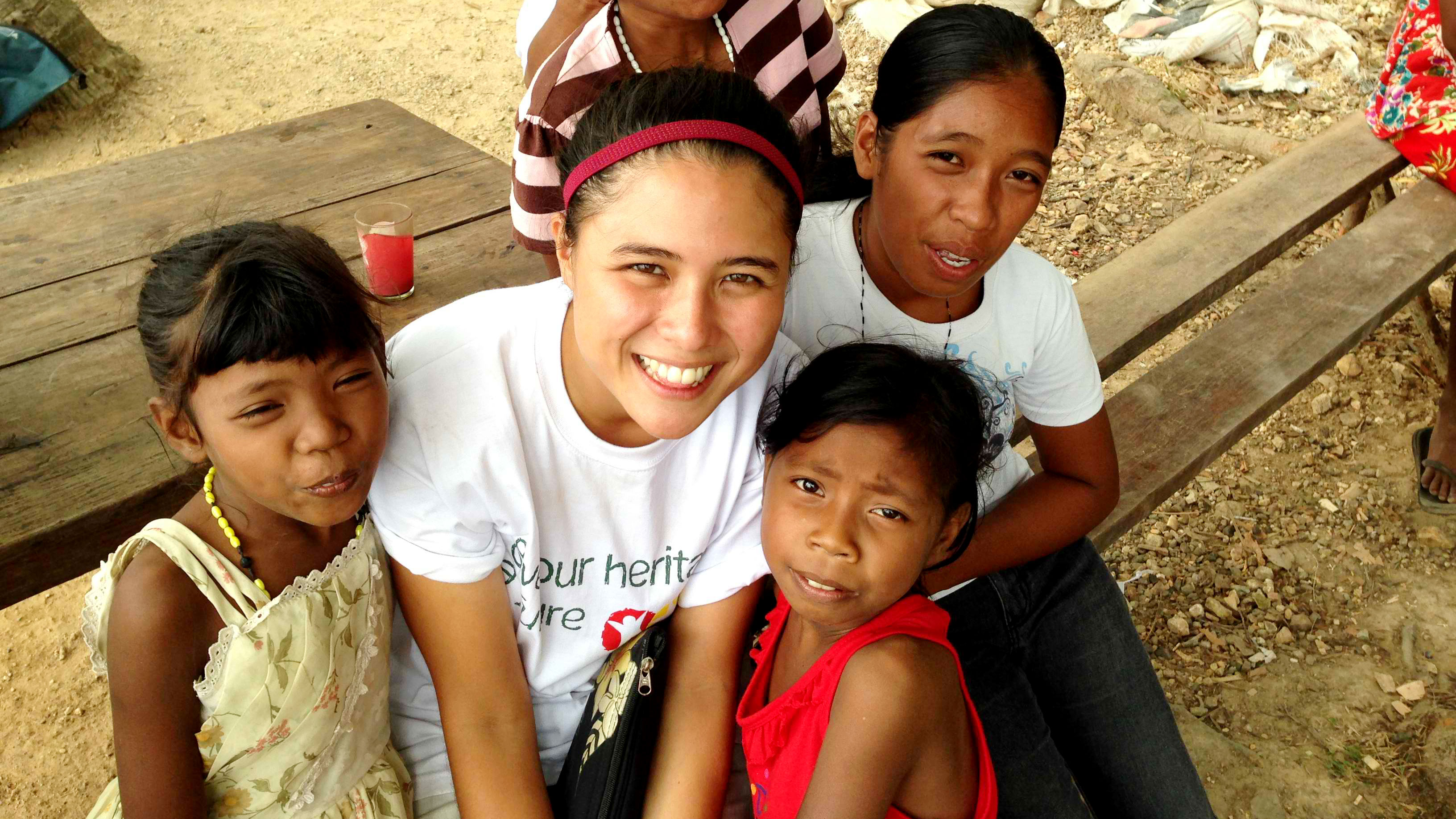Thanks to Rainey Sarmiento, one of our first reading coaches, for sharing her inspiring teacher story.
—–
The teacher dream was one I had long been restless to fulfill.
Just a month after college graduation, I became a reading coach at The Learning Library. Ecstatic with so much enthusiasm for my first job, I remember commuting home many afternoons wondering why others would ever choose to do something else. Days were spent on read-alouds, workshops, and countless stories shared from books or heart to heart conversations with students and co-workers alike. God in His awesome grace made real my teacher dream — he let me stay on as reading coach for three years.
Then came a yearning for “good” disturbance — a temporary break from the familiar.I joined the Jesuit Volunteers Philippines and committed to ten months of work away from home, in the island of Culion, Palawan. To be honest, I admit my first reasons for going were more selfish than noble– to find myself, and hopefully help out others on my journey too.
—–
I was assigned as program associate for the Adult Capability Building Program of Cartwheel Foundation. My work was with the gentle Tagbanua communities, the indigenous peoples of Palawan. They lived in the islands in small groups, where one’s neighbors were also blood relatives. Getting to school at the town proper was a privilege; not even half of them are able to go.
“Gusto naming bumoto nang mag-isa” — consistently, I heard this as reason for our adult learners’ willingness to attend classes. They were frustrated with abuse from past elections and no longer wanted to be helpless as politicos took advantage of their illiteracy. There also was the struggle for their ancestral domain title. They knew their land was both source of life and legacy, but even this was in danger of being snatched away from them.
Working very closely with their teachers, I realized a challenge early on: how was one to teach reading in a place where there was almost no printed word at all?
—–
‘Think outside the box’ is what many often say; but for our team, the call was to think outside the schoolhouse, and transform the entire island into their classroom. Instead of cartolina flash cards, we used those made from bamboo; instead of number beads, we used pebbles and leaves and shells. We were careful not to take in too many things that seemed alien and were conscious of using the things they had from their own environment instead.
The Marungko method of teaching reading in Filipino was appreciated by learners and teachers alike. I am grateful toTeacher Kate of the Learning Library for sharing this with us Filipino teachers then. Introducing letters in batches of 3s in the order of its frequency of use in the language was a novel approach that easily made much sense to many of them. Practicing tracing letters first with their fingers on sand, and repeatedly sounding each one out; little by little these shapes assumed meaning that when strung together, would translate to words, and then understanding. It was an effective means to break down the complex process of reading, to show the Tagbanua adults that they definitely can learn to do it too!
In the last months of the school year, our team of teachers decided to present voters’ education modules. They learned about the PCOS machine and what the indelible ink on their finger would be for. What meant most for them were the mock elections at the end. Independently they shaded beside the names of candidates whom they were for.
This was their means of contributing to nation-building and they saw much value in it. In this way I realized that learning to read and write meant giving voice and an opportunity to be heard. But it goes far beyond mere voting. As it is with many other indigenous communities where oral tradition has been the only means to pass on knowledge, it has become a greater challenge to hold on to their culture from centuries ago or even move forward with the times. For them, as it is for many of us as well, literacy means continuously breathing life into all their stories and ultimately keeping sacred their heritage.
—–
Even as I am no longer a full-time teacher, I’d like to believe He’s now called me to a different classroom — one with different walls, or no walls at all, where creativity and innovation still thrive, and with the everyday sharing of written and spoken stories, where I can teach and be taught.
And really, He’s been faithful in His awesome grace, fulfilling my teacher dream.

